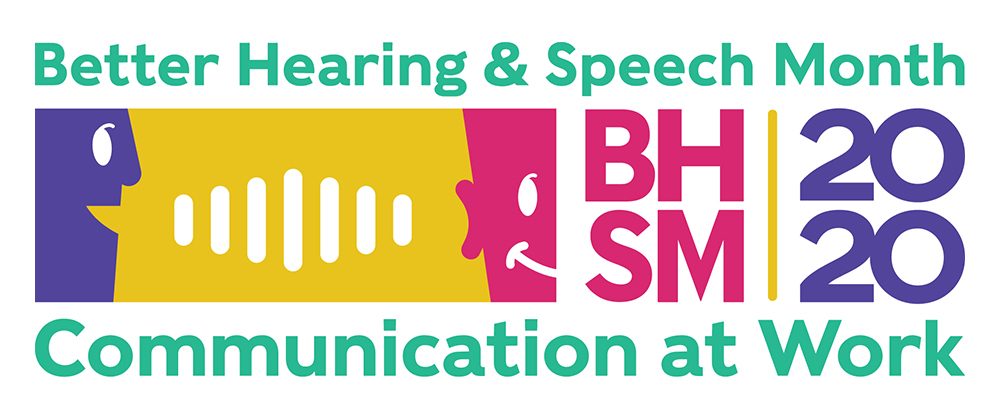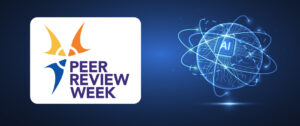Although Better Hearing & Speech Month (BHSM) this year is different than anything in recent (or distant!) memory, we hope that you’re taking advantage of the BHSM resources available to members. For the most part, we’ve recalibrated our BHSM materials this year around the impact of COVID-19 on persons with communication disorders.
In addition to covering topics such as ways to help people who stutter or have hearing loss in virtual meetings, BHSM 2020 is also focused on communication strategies for adults with hearing loss at home and managing swallowing disorders while sheltering in place.
Our previous post focused on audiologists and speech-language pathologists (SLPs) who work with children. This post provides resources from the ASHA Journals for professionals working with adults via telepractice.
For audiologists who are not accustomed to telepractice, a great place to find information is the special issue of the American Journal of Audiology that focuses on Internet and Audiology. This issue covers topics that may already be familiar to some clinicians, such as service delivery in rural communities or caring for older patients with hearing impairment who may not be able to leave their home. In addition, the issue also looks at internet-based cognitive behavioral therapy and online support groups. You can read more about the special issue here.
In addition to the special issue, the following articles highlight teleaudiology:
- Teleaudiology Services for Rehabilitation With Hearing Aids in Adults: A Systematic Review—A review of 14 different studies on hearing aid services delivered over telepractice, focusing on feasibility, efficiency, and barriers to providing service.
- Audiological Care and Telehealth in Remote Alaska—With 59% of its population clinically underserved, telehealth—including teleaudiology—is a necessity in Alaska. This article focuses on teleaudiology in a remote region of Alaska and the role of hearing and communication in Alaska Native culture.
Preventing and managing vocal strain among professional voice users has long been a concern for SLPs. The articles below explore using a smartphone application to evaluate vocal strain—and the unique challenges inherent to cell phone and speakerphone use. The articles may be particularly applicable to virtual meetings, which are being held with much greater frequency because of the current stay-at-home orders.
- An Online Telepractice Model for the Prevention of Voice Disorders in Vocally Healthy Student Teachers Evaluated by a Smartphone Application—Although 11%–38% of U.S. teachers encounter voice problems, the profession often mandates very little voice training or provides such training for these professionals. In this article, student teachers received voice training via telepractice, and their voices were recorded and analyzed by a Smartphone application.
- Cell Yell!: Health Risks in Telehealth—People tend to speak louder using the phone or speakerphone, and without visual cues such as facial expression, an overreliance on voice may make this even worse. This study examined whether a video component could cause fewer vocal collisions (i.e., people talking at the same time) or improve vocal quality in general.
Finally, the next three articles focus on SLPs who work with three unique populations. Each article covers both service delivery considerations and client satisfaction.
- A Usability Study of Internet-Based Therapy for Naming Deficits in Aphasia—In this study, the authors surveyed both clinicians and patients about the usability (characterized here by effectiveness, efficiency, and satisfaction) of web-based treatment for chronic poststroke aphasia.
- Clinical and Quality of Life Outcomes of Speech Treatment for Parkinson’s Disease Delivered to the Home Via Telerehabilitation: A Noninferiority Randomized Controlled Trial—In this study, 21 people were randomly assigned either in-person or online treatment for Parkinson’s disease. The promising results showed comparable clinical and quality-of-life outcomes for both groups.
- Clients’ Experiences of Telepractice for Stuttering—This study of clients currently receiving stuttering therapy online may provide some insights for clinicians new to the process. Clients for the most part were happy with their services, but their comments on advantages and disadvantages may be of particular interest.
Although you may be spending this BHSM in a different way than you initially planned, we at the ASHA Journals know that ASHA-certified audiologists and SLPs are always growing and learning. If you haven’t already, you can read up on our BHSM resources for audiologists and SLPs working with children. For more on BHSM, check out http://www.asha.org/bhsm.







